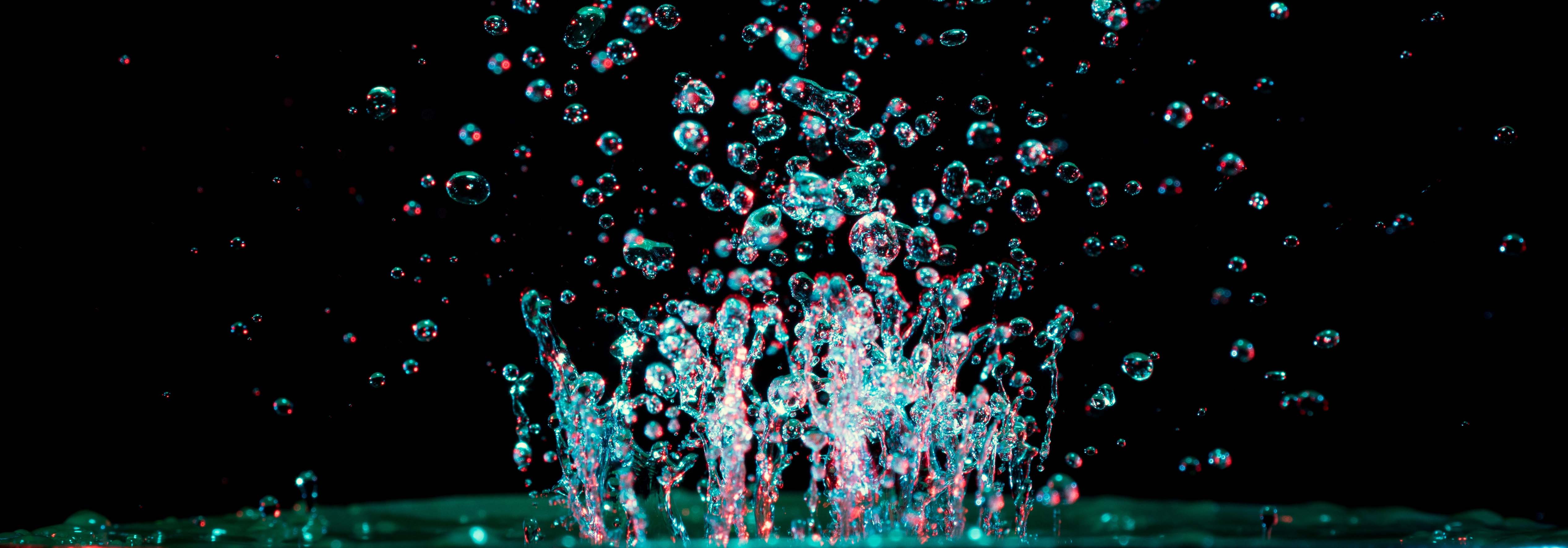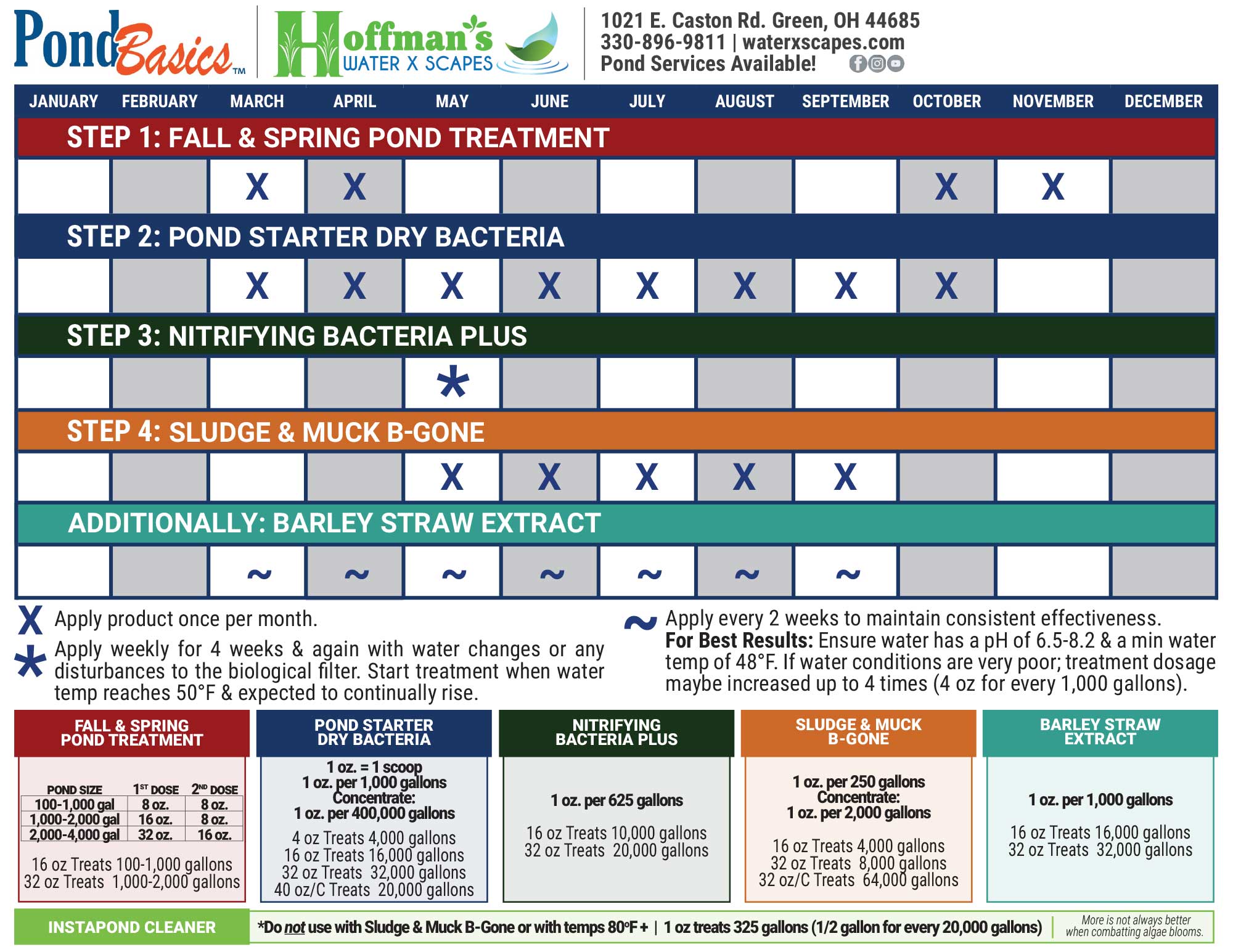How To Fix Green Pond Water
A common question amongst many pond owners is;
“Why has the water in my garden pond turned green?”

Let’s take a look at what this green pond water is, what may cause it, and some effective ways to treat and remediate the phenomenon…
Green water is not necessarily a sign of an unhealthy pond. In fact, overreacting can often cause more harm than good. Green water is a sign that the ecosystem has become out of balance. Did you know that it can take up to three years for a water garden to naturalize? This means that the pond has become somewhat self-sufficient with beneficial bacteria reproducing in the rocks and pond plants spreading and filtering the water. During this time, you may have the most difficulty in keeping your pond water clear, but patience is a virtue and understanding your pond water will help you through it.
Green water is actually a microscopic alga (simple plant organism) that is suspended and floating in the water. Some people may refer to it as “pea soup” or an “algae bloom”.
You may experience green pond water suddenly and even without the presence of string algae. It may also develop slowly, starting with a cloudy appearance before it actually turns green. As the number of single cell algae increases, water will become greener until it becomes as dark as pea soup. Bright, sunny days can instantly photosynthesize simple plant organisms that are feeding off of nutrients in the water, causing pond water to turn green suddenly! This is what we call an algae bloom - which may only last a day or two.
Green water is most commonly caused by excess nutrients in the pond (high nitrates from decomposing waste) – or high phosphates from fertilizer runoff or excess fish food.
The best treatment is plants, plants, and more plants! Did I stress that enough?
As beneficial bacteria and dissolved oxygen work together, to break down decomposing debris and fish waste into nitrates in the water, these nutrients are taken up by marginals, bog plants, floating plants and seaweed ( submerged aquatics). Plants should be at all levels of your pond to help take nutrients out of the water and help control water temperatures by shading the pond. Remember, plants use up the same nutrients that green water algae thrive off of. So, having plants means more natural filtration helping lead to less algae in the long run.
Water treatments, used to help clarify pond water, known as flocculants like Pond Basics Pond Clarifier, may be used in a pinch to help clear up dirty pond water. These products take suspended particles and clump them together so they become heavy and settle to the bottom of your pond. Just be aware, more is not better in this situation. Sticking to what your water treatment instructions say is crucial. Too much can cause an adverse reaction making water cloudier. A natural alternative is a product called Calcium Montmorillonite Clay (CMC), made by Microbe-Lift. It works just like the chemical flocculant mentioned above. The beauty of it is, you cannot overdose. Not only does this product “polish” the water, but it adds special micronutrients for fish while helping enhance their colors.
UV lights are also effective against green water. As water passes through the plumbing, the light will “burst” the cell wall of algae organisms, killing it. It is important to have a UV properly sized for your water flow. **However, keep in mind that this just treats the symptoms and does not cure the problem - which is having excess nutrients in the pond.
It is important to know that a UV light does not differentiate between algae and bacteria, so be sure you turn off your UV light for a couple days when adding your beneficial bacteria treatments.
Good circulation of pond water through filter mats helps in removing suspended particles from the pond. Filter mats can be purchased in varying degrees of density to adapt to the size, or number, of suspended particles in the water. Much like vacuuming your carpets, the more often you clean the pond’s mechanical filter, the more debris you are removing from the water. Pond aeration will help lift clumped particles and help send them out through the skimmer filter mats as your pond pump draws the water throughout your system.

A partial water change can help dilute the concentration of green algae - but that is only a start. If balance is not restored, algae will continue to grow and cloud the pond water up all over again.
Our Pond Basics Monthly Pond Water Regimen for Clean, Clear Water:

Water Treatments:
- Fall & Spring Pond Treatment: Use in March, April, October & November to help break down pond debris.
- Pond Starter Dry Bacteria: Use monthly to help clarify your pond water and keep your pond healthy.
- Nitrifying Bacteria Plus: Use in April/May. It helps make your pond water safe for your koi and pond fish while helping improve the quality of your water.
- Sludge & Muck B-Gone: Use May-September to help eliminate pond sludge, muck, odors, and cloudy water. For best results use with the Pond Starter Dry Bacteria. (Do not us with the Fall & Spring Treatment or InstaPond)
- Barley Extract: Use monthly, starting early in the season, to reduce pond maintenance. Barley Extract is a natural water clarifier that helps keep your water clear - it will not get rid of existing algae, but it will help to reduce the production on new pond algae.
- InstaPond Cleaner: Can be used weekly to reduce pond maintenance. It is a pond and debris cleaner that is used to help restore your pond water quality.
- Dose every three (3) days until desired result is achieved. Use weekly thereafter, to maintain desired results. To prevent fish kill, due to oxygen crash, do not exceed the recommended dosage or use when temperatures are above 80°F. *Do not use with Sludge & Muck B-Gone.
Pond Plants:
*Aquatic pond plants are the best natural water filters! They battle for the same nutrients as the algae does. Therefor, if you have the right recipe of pond plants, they will help filter your pond water to keep it clean and clear of algae and green water.
- Hornwort: Submerged, oxygenating pond plant that helps prevent 'pea soup' green pond water and algae.
- Water Lettuce & Water Hyacinth: Floating pond plants that absorbs excess nutrients from your pond water helping to prevent algae.
- Marginal Pond Plants: Besides being great filters, they offer beauty, dimension, texture, food, protection, nesting and naturalization to your pond.
- We recommend planting enough for approximately 25% of the perimeter of your pond.
*Learn more about pond plants and the pond eco-system with this free brochure.
RELATED BLOG: Learn How to Keep your Pond's Eco-System Balanced for Crystal Clear Pond Water
